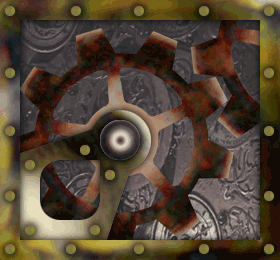
Galleries
~ensembles
~items
~videos
FAQ
~origins
~aesthetic
~outer links
~Origins~
Although many works now considered seminal to the genre were published in the 1960s and 1970s, the term steampunk originated in the late 1980s as a tongue in cheek variant of cyberpunk. It seems to have been coined by the science fiction author K. W. Jeter, who was trying to find a general term for works by Tim Powers (author of The Anubis Gates, 1983), James Blaylock (Homunculus, 1986) and himself (Morlock Night, 1979 and Infernal Devices, 1987) which took place in a 19th-century (usually Victorian) setting and imitated conventions of actual Victorian speculative fiction such as H. G. Wells's The Time Machine.
<~back *Sorry, I'm far too lazy to rewrite this stuff when it's so perfectly written for me already!
Wikipedia has the following to say about Steampunk and its origins.*
Some prototypical steampunk stories were essentially cyberpunk tales that were set in the past, using steam-era technology rather than the ubiquitous cybernetics of cyberpunk but maintaining those stories' "punkish" attitudes towards authority figures and human nature. Originally, like cyberpunk, steampunk was often dystopian, sometimes with noir and pulp fiction themes as in cyberpunk. As the genre developed, it came to adopt more of the broadly appealing utopian sensibilities of Victorian scientific romances.
Steampunk fiction focuses more intently on real, theoretical or cinematic Victorian-era technology, including steam engines, clockwork devices, and difference engines. While much of steampunk is set in Victorian-era settings, the genre has expanded into medieval settings and often delves into the realms of horror and fantasy. Various secret societies and conspiracy theories are often featured, and some steampunk includes significant fantasy elements. There are frequently Lovecraftian, occult and Gothic horror influences as well.

